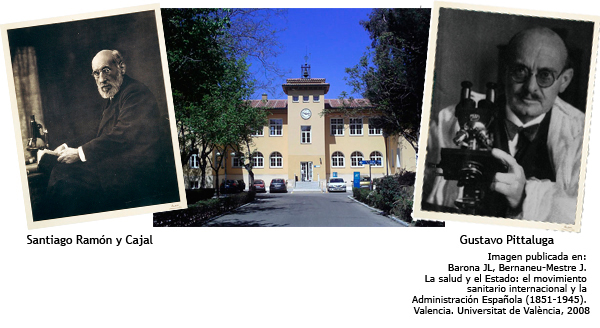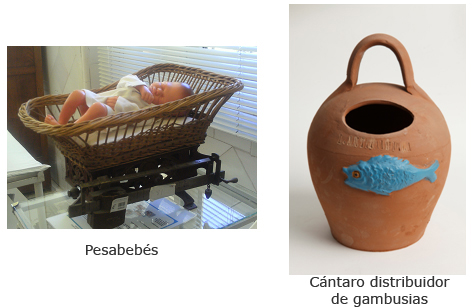The Museum of Health and Public Hygiene began development in 1995 and is a unique centre in its field in Spain.
It is located in Pavilion 14 on the Chamartín campus at the Carlos III Health Institute, which housed the laboratories of the National Hospital for Infectious Diseases, known as the Hospital del Rey.
The aim is to manage, for dissemination and conservation purposes, collections of objects, books, and documents reflecting the most significant aspects of the history and evolution of public health in our country. In this way, the promotion of research in this field is sought by providing specialized technical support to researchers, professors, and technicians as needed.
In order to give this collection greater dissemination and visibility, on July 19, 2010, an agreement was signed with the Royal National Academy of Medicine to facilitate the mutual availability of resources, through collaboration in the realization of periodic or permanent thematic exhibitions on public health.
Santiago Ramón y Cajal (1852-1934)
For the Carlos III Health Institute, Santiago Ramón y Cajal was a figure of great importance. Let's not forget that our Institute originated from the Institute of Serum Therapy, Vaccination, and Bacteriology of Alfonso XIII (established by Royal Decree on October 28, 1899, later renamed as the National Institute of Hygiene of Alfonso XIII), of which he was the first director and to which he gave great impetus. The Alfonso XIII Institute was the first central healthcare institution, in a context where the so-called "Laboratory Medicine" was in full development.
Ramón y Cajal, along with his team, conceived the Institute as the fusion of Health and Science. He carried out training for scientific research among the Institute's staff and healthcare personnel who came to the center for training. This enabled him to have more and better-prepared personnel. In this way, he persuaded the government to build a new building similar to those of other European research institutes, where services were expanded (disinfection, parasitology, etc.), and where the "Bulletin of the Institute of Serum Therapy, Vaccination, and Bacteriology of Alfonso XIII" was published from 1905 onwards, to disseminate the research conducted by the technicians.
At the Alfonso XIII Institute, he succeeded in creating a top-notch scientific and educational infrastructure in Spain.
For these reasons, our Carlos III Institute owes a great deal to Don Santiago Ramón y Cajal.
Gustavo Pittaluga Fattorini (1876-1956)
Gustavo Pittaluga Fattorini was born in Florence, Italy, on November 10, 1876, and passed away in Havana, Cuba, on April 27, 1956. He studied medicine in Rome and, upon completing his thesis, became a disciple of Giovanni Battista Grassi (1854-1925), who had demonstrated the sexual cycle of the Plasmodium within its transmitting vector, the mosquito Anopheles.
Promoted by Grassi, Pittaluga traveled to Spain in 1902 to begin a field study on malaria in the Iberian Peninsula. After presenting his findings at the XIV International Medicine Congress held in Madrid in April 1903, he earned the admiration of Santiago Ramón y Cajal, who recruited him as Chief of the Disinfection Service at the National Institute of Hygiene Alfonso XIII in 1907. He later held the position of Deputy Chief of the Public Hygiene Section, and from there, he organized the Parasitology section, where he remained until 1924, carrying out numerous commissions and study trips, such as the Commission for the study of sleeping sickness in the Gulf of Guinea, directed by him.
From 1920, he directed the campaigns against malaria and the anti-malarial prophylaxis services in Spain. Starting in 1923, he was a member of the CHSDN and the malaria subcommittee, through which he traveled extensively around the world, observing and verifying the effectiveness of the prophylactic and therapeutic methods adopted in much of Europe, for over a decade in relation to malaria.
He was the first Director of the National School of Health, established in 1924 with the aim of:
Instruct and train the body of medical officials who will henceforth belong to the agencies under the General Directorate of Health.
Under his direction, the statutes of the School were drafted in 1930.
In 1936, he went into exile following the outbreak of the Spanish Civil War.



